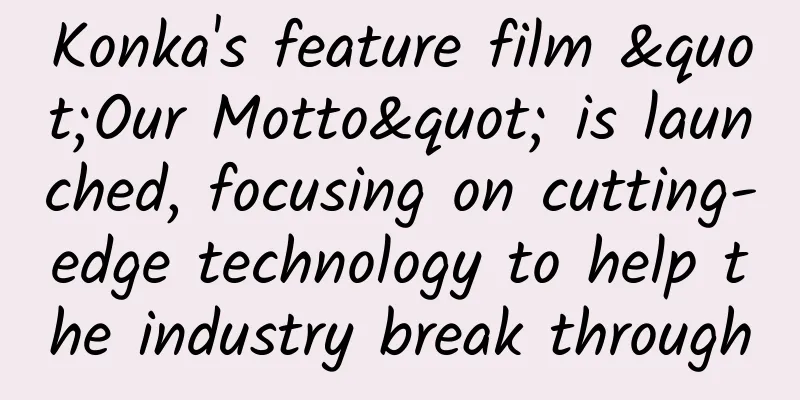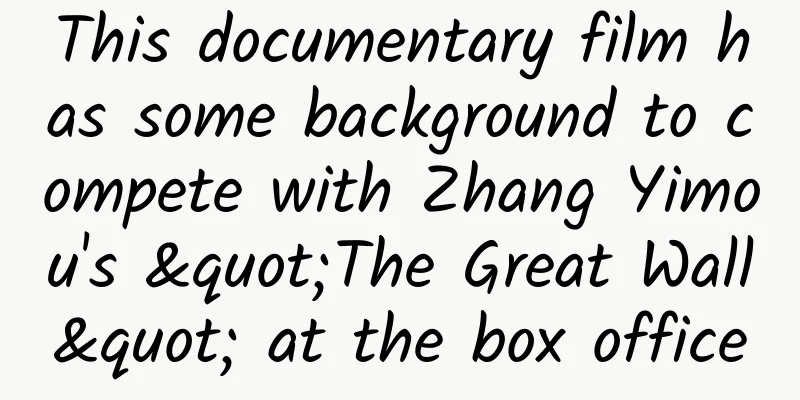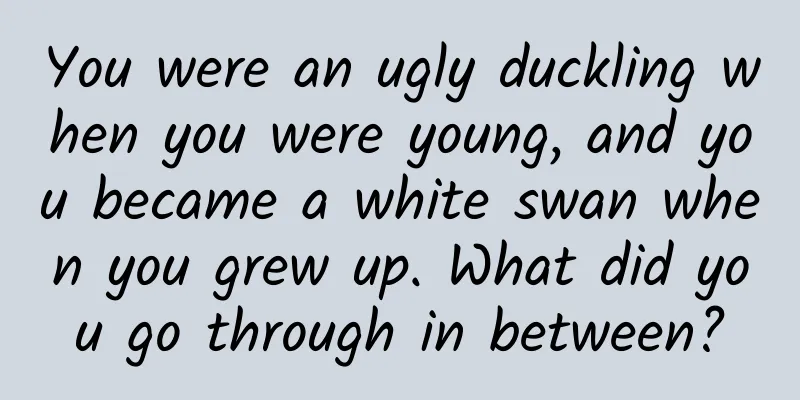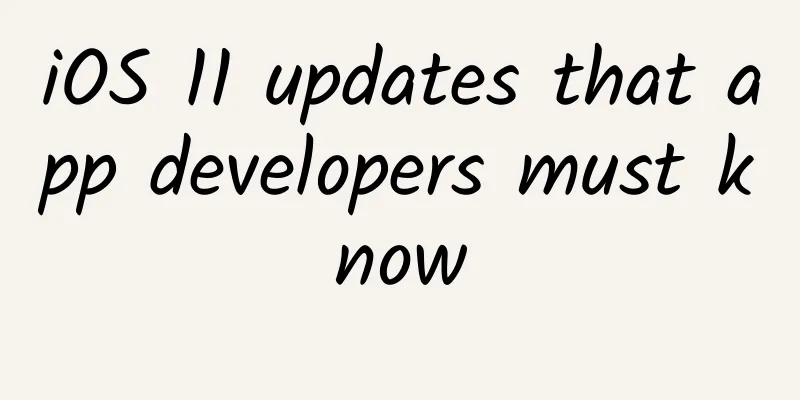Apple "has no successor"? The CFO is about to retire and the company is in a deep successor shortage! Cook is trying every means to retain Jobs' original team
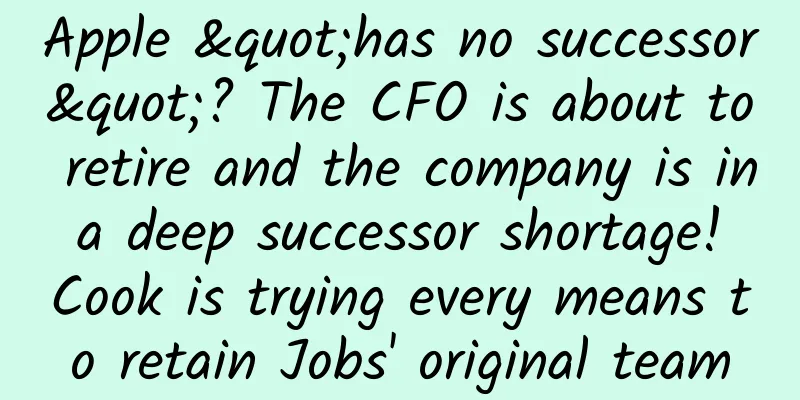
|
Editor | Yifeng Produced by | 51CTO Technology Stack (WeChat ID: blog) Last week, Luca Maestri, the 60-year-old Apple veteran, finally announced his retirement and was about to leave the CFO position he had served for 10 years. During his tenure, Apple's stock price soared nearly 1,000% and revenue more than doubled. He also made significant contributions to strategic investment and shaping corporate financial discipline. However, Maestri's career at Apple did not end there. It is reported that Maestri will not leave his post - he will still be responsible for the Information Systems and Technology Department (IS&T), information security, and real estate and development functions. These departments can be collectively referred to as administrative departments, which are not core work. In addition, he will provide advice to Cook and other senior executives. It can be seen that after leaving office, the importance of his responsibilities and the workload are far less than when he was previously CFO. However, this reveals a strong signal: Apple cannot do without Maestri, and even more so, Jobs' "old team". 1. Apple is in a period of transition, and leaving the job without leaving the company has become a common practiceThe tradition of Apple veterans “leaving their jobs but not leaving the company” can be traced back to the first year after Jobs’ death. That year, Bob Mansfield, senior vice president of hardware engineering, who had made outstanding contributions, began to consider retiring. picture He has extensive experience in Apple's hardware team. As early as 1999, he was the senior director of Raycer Graphics and came to Apple with the acquisition of the company. Since then, he has been responsible for managing the hardware delivery team of a series of classic products such as iMac, MacBook, MacBook Air and iPad. After having the idea of retiring, Bob Mansfield officially announced his retirement in June 2012, and Dan Riccio, vice president of iPad hardware engineering, took over the position. However, the hardware engineering team strongly opposed Mansfield's departure and worried that his departure would have a huge negative impact on the business of the entire department. In August, after much negotiation from Cook, Mansfield agreed to stay at Apple, with the main concern being whether his successor, Dan Riccio, was ready to take on the heavy responsibility. So Apple offered Mansfield a new position to eliminate all the concerns and achieve the effect of "having both". In October, Apple officially announced that Mansfield would serve as senior vice president of the newly created technology department, primarily responsible for wireless technology and custom designed semiconductors for Apple products, and would report directly to Cook. In July of the following year, Mansfield resigned from the executive team again, but was still in charge of Apple's special projects. Until he actually left in 2020, Mansfield had been promoting the birth of Apple Car. As we all know, this decade-long dream of making cars came to an end earlier this year. Another person who follows this practice is Phil Schiller, who has contributed to Apple for 30 years. picture He served as Apple's senior vice president of global marketing from the time he returned to Apple with Steve Jobs in 1997 until his retirement in 2020. Schiller guided the development and marketing of Apple's classic products such as iMac, iPod, iPhone, and iPad. His unforgettable advertising shorts such as "Silhouettes" (iPod) and "Get a Mac" have shaped Apple's bold and avant-garde image as a benchmark in technology. picture Above: The iPod Silhouettes ad, praised as one of the greatest series of commercials in advertising history. After retiring in 2020, Apple retained an honorary seat for him as an Apple researcher, responsible for continuing to lead the App Store and Apple release events. Although it is an honorary seat, this position is not as easy as it sounds - at a time when the App Store is deeply involved in antitrust allegations, the 64-year-old veteran still maintains a work rhythm of nearly 80 hours a week. In addition, foreign media reported that he would join the OpenAI board of directors as an observer, but the matter was eventually shelved due to concerns such as monopoly. In addition to leaving his job but not leaving, legendary designer Jony Ive chose to become an "outsourcer" to stay connected with Apple. In 2019, he left Apple to start his own independent design company LoveFrom, and core designer Marc Newson also left at the same time. picture Ive said that although he is no longer an Apple employee, he will "remain actively involved for many, many years to come" and that his team will continue to provide design advice to Apple as an outside consultant. 2. Apple’s veterans are retiring one after another, who will take over?According to Apple, the next CFO, Kevan Parekh, will officially take office on January 1, 2025. picture This means that Kevan Parekh still has enough time to prepare. For reference, the transition period for the US president is two months, from Election Day in November to late January of the following year, while Apple's executive transition period obviously has much more time. Kevan Parekh, 52, has been working at Apple for 11 years. He previously worked in financial management at information services provider Thomson Reuters and General Motors. After joining Apple, Parekh was responsible for financial planning, investor relations and market research. Apple mentioned that this was a "planned succession". Cook said about the successor selection, "Kevan has been an integral member of Apple's financial leadership team for more than a decade and knows the company inside and out. His sharp intelligence, wise judgment and outstanding financial skills make him the perfect choice for Apple's next CFO." From the handovers between new and old executives, it is not difficult to see that Apple's conservative and steady succession strategy has three obvious characteristics: 1. Internal selectionIn terms of executive succession strategy, Apple rarely hires external personnel, and almost all of them are internally promoted executives with many years of experience. In addition to Kevan, who took over as CFO and worked at Apple for 11 years, Greg Joswiak also worked at Apple for more than 20 years when he succeeded Phil Schiller as vice president of global marketing in 2020. Even when Mansfield left the car project, Apple did not choose to hire an external expert in the automotive industry to lead the project. Instead (after a series of personnel changes), John Giannandrea, then senior vice president of AI strategy, led the project. 2. Sufficient transition periodIn order to ensure that successors are adequately prepared and achieve a smooth transition in terms of business continuity and stability, Apple has always reserved a large amount of preparation and training period. It is reported that over the past few months, Parekh, who took office in January of the following year, has been preparing to take over as CFO. He has gradually participated in private meetings with Apple financial analysts and partners. Before Greg Joswiak took over as vice president of global marketing, Phil Schiller "let go" in advance and gradually turned to an advisory role. 3. Continue the spirit of Jobs as much as possibleApple allows those who have worked with Steve Jobs to continue to serve Apple by retaining honorary positions and external collaborations. Since the death of Steve Jobs, Apple's executive team has worked hard to maintain its product-centric philosophy and continue Jobs' management philosophy to the greatest extent possible. However, Apple is also constrained by the public's high expectations of being a pioneer in technology. From its shattered dream of making cars to its Vision Pro with endless stacking of features, Apple seems to have been slow to deliver the satisfactory results it imagined. 3. Conclusion: It is easy to keep Steve Jobs’ team, but it is hard to keep his “highlight moments”Faced with the departure of key executives, Apple has always refused to let go. Indeed, in the short term, the retention of outgoing CFO Maestri at Apple is a win-win for Cook and Apple shareholders. But it is worth considering whether this strategy is sustainable and what negative consequences it might have in the long term. Apple veterans still hold important positions in the company, and their voices carry a lot of weight. Although this ensures the sustainability of the business and strategy, it also makes the successors more inclined to rely on Apple's past traditions rather than adapting to external changes. At the same time, the lack of external executives also deprives Apple of the opportunity to introduce external perspectives and vitality. The transfer of internal executives between different projects is very likely to lead to the situation of "outsiders leading insiders" in specific fields. There are always voices saying that Apple is losing innovation without Jobs. It is worth noting that many of Apple's top executives are also approaching retirement age. Apple's current COO Jeff Williams is 60 years old, Apple's senior vice president of services Eddy Cue is 59 years old, and even Tim Cook himself is 63 years old (according to the US's tiered retirement system, his full retirement should be in four years). Will Apple continue to adopt the strategy of leaving the company without leaving the company? Before Apple's upcoming fall conference on September 10, I can't help but feel a lot of emotion when sorting out these. Judging from the current leaks, this new product is likely to continue the steady strategy rather than a major leap forward. Although the launch event is called "Highlight Moment", whether Apple can live up to the name remains to be revealed in a few days. When talking about the topic of highlights, I can't help but think of the legendary designer Jony Ive's retelling of Jobs' product philosophy. In fact, as Jobs' "spiritual partner", Ive paid tribute to him with the company name when he founded LoveFrom. He said: "At an employee meeting, Jobs told everyone that there is a fundamental motivation for developing products, which is that you do it with love and care. You are developing for others. Although you may never meet these people or shake their hands, when you work with love in your heart, you are expressing gratitude to humanity and this species. This is one of the fundamental motivations." I think great technological products will inevitably hit us with this kind of love, and this is the most touching "highlight moment". |
>>: What the hell is Bruce Lee’s triple-folding screen?
Recommend
Can sitting on a hot stone block cure menstrual cramps? According to the doctor...
recently A stone pillar from Xi'an became an ...
The OnePlus phone started out at 1,999 yuan, but now the 7 Pro is priced at 4,000 yuan. Is it still worth buying?
OnePlus officially released its new OnePlus 7 ser...
In the name of AI: Can Nvidia really rest easy with its skyrocketing stock price?
Recently, graphics chip manufacturer Nvidia relea...
Why doesn’t Apple have iPhone 2 and iPhone 9?
Recently, Apple's autumn new product launch c...
Dragon Boat Festival marketing tactics, take it and don’t thank me!
In the second half of the Internet, the performan...
If your stomach is growling, it may not be because you are hungry. Be careful of these 4 situations!
In movies, TV shows or literary works, the rumbli...
Yu Chengdong: Huawei has developed its own operating system, just in case
Huawei’s consumer business CEO Richard Yu said th...
A ghost in the water and a flower ended the two thousand years of atomic debate
Author: Tian Dawei Atoms: Fantasy or Reality? Nuc...
The latest news on the 2022 Shanghai full lifting of the lockdown: When will it be lifted? Attached is the forecast of the time of unblocking in each area
Since May, the local epidemic situation in Shangha...
What is the impact of web page opening speed on SEM marketing?
The speed at which web pages open determines whet...
Advertising with high conversion rates all have these characteristics!
Five years ago, a trend emerged - traditional ent...
Three-cylinder engines are no longer what they used to be and are gradually becoming the mainstream trend
The list of the 2018 International Best Engines h...
National Low Carbon Day丨What are the twelve hours of low carbon life like?
July 10 to 16 this year is the 33rd National Ener...
Why doesn't Apple use an "iWatch"?
According to Reuters, Apple Inc. (hereinafter ref...
FirstCar.com: Top 10 pure electric sedans with the highest value retention rate in 2023 BYD Han EV has a one-year value retention rate of 70.66%, surpassing Tesla Model 3 to win the championship
Recently, the first car network announced the top...




